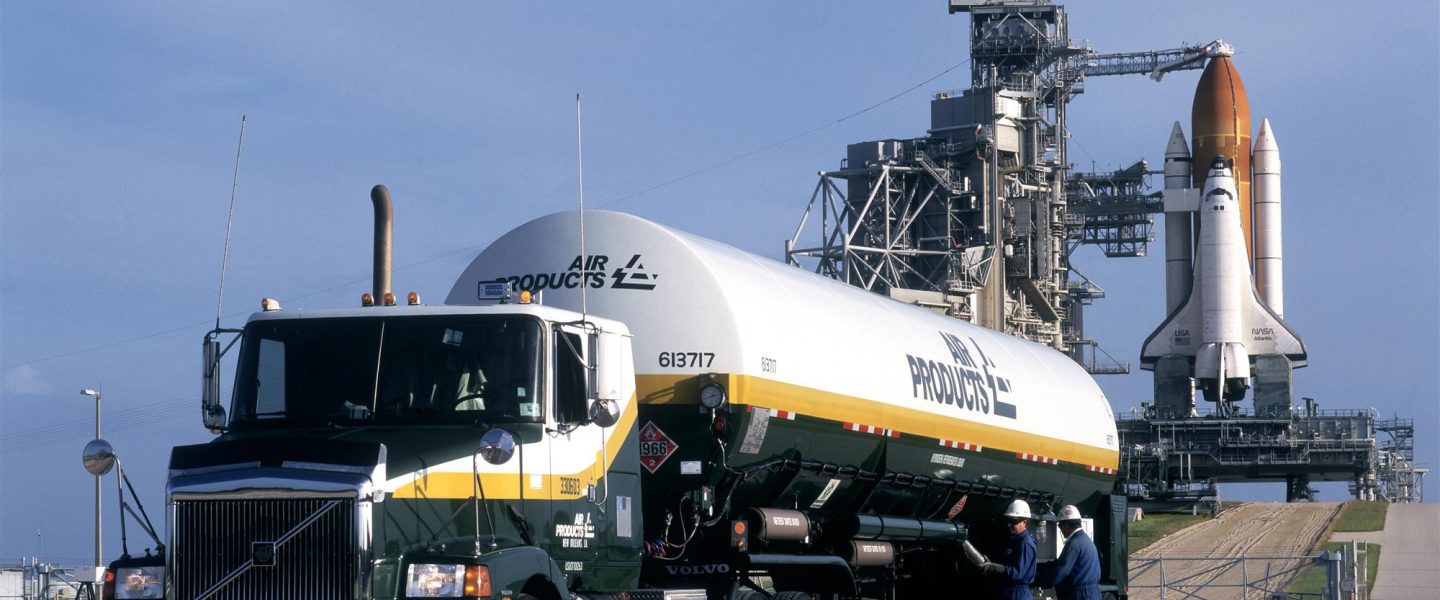
Image courtesy of Air Products and Chemicals, Inc.
At NASA’s Kennedy Space Center (KSC) hydrogen is used for space launch vehicles. It was the loss of KSC’s hydrogen and helium that led to this project, Metal Hydrides for Hydrogen Separation, Recovery and Purification.
Lost Hydrogen and Helium
Significant quantities of hydrogen are lost during the cool down of the transfer lines and from flash evaporation as the high pressure cryogenic liquid enters the low pressure dewars. Additionally, during storage, hydrogen is constantly lost because of boil off. NASA also loses hydrogen during purge operations. Prior to filling lines with liquid hydrogen, they must be pre-cooled with liquid helium. After an operation, the residual hydrogen is purged, again with helium, in order to safe the systems. Both the hydrogen and helium in these operations are currently not recovered, leading to additional losses. Recovery of this lost hydrogen and helium could lead to substantial savings.
Recovery
The project objective was to research and develop a hydrogen storage system that can recover both hydrogen and helium. Hydriding alloys of the AB5 type are suitable materials for hydrogen storage applications because of their large hydrogen capacity, easy activation and rapid hydriding/dehydriding rates. One of these representative compounds that has been extensively studied is LaNi5, a compound that absorbs hydrogen rapidly, reversibly and selectively. As a result, it is capable of not only absorbing hydrogen as it vaporizes during transfer operations, but also is potentially useful for separating hydrogen from the helium purge gas. Selective removal of the hydrogen would allow recovery of helium, in high purity, for future use.
Purification
The results showed that the alloy, LaNi5, had the kinetics and capacity needed to remove hydrogen from a flowing stream of hydrogen and helium, thus allowing purification of both gases. Other results showed that the addition of aluminum to the alloy up to a level of 47 mole% provided improvement in the kinetics of hydrogen absorption without significantly reducing capacity. This incorporation of aluminum into the lanthanum nickel alloy will enormously reduce the weight and cost of the alloy required to purify hydrogen and helium. In addition to being used to purify helium and hydrogen, LaNi5 could also be used to capture the hydrogen currently lost to boil-off.
Hydrogen Uses
While the hydrogen recovered could not be used for shuttle functions because of the requirement for liquid hydrogen, it could be used for other functions at the space center, such as fueling automobiles or buses. The project recommended that a system based on lanthanum, nickel, aluminum alloy be implemented at KSC for the purification of hydrogen and helium and the recovery of boil-off hydrogen.
Years of Research: 2002—2006
Sponsored by: NASA
